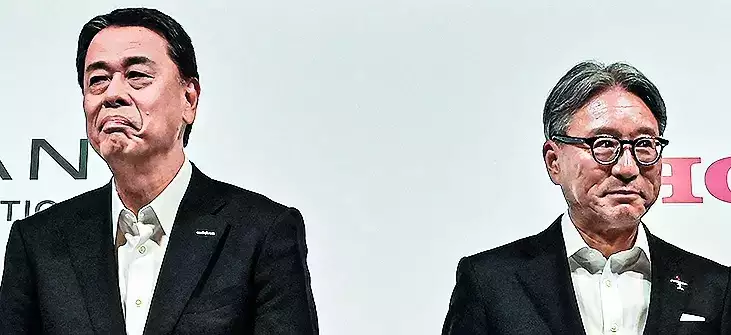Inside the collapse of Nissan & Honda's USD 60-billion mega deal

But the merger talks unravelled in a little more than a month due to Nissan's pride and insufficient alarm about its predicament, as well as Honda's abrupt decision to revise the terms and propose that Nissan become a subsidiary, according to six people familiar with the matter.
Nissan, which for years until 2020 was Japan's second-largest automaker behind Toyota, insisted on receiving near-equal treatment in the talks despite its weaker position, three of the people said.
Honda pressured Nissan to make deeper cuts to its workforce and factory capacity, but Nissan was unwilling to consider politically sensitive factory closures, three of the sources said. They said they were left with the impression Nissan felt it could recover on its own, despite its mounting difficulties.
That intransigence, combined with what Honda management saw as Nissan's slow decision-making, helped torpedo a deal that would have created one of the world's largest automakers, three people said.
This account of the forces that scuttled the mega merger features previously unreported information, including details about factories Nissan wanted to keep open, its resistance to Honda's pressure for deeper cuts, and the reaction inside Nissan to some of Honda's demands. The story is based on Reuters interviews with more than a dozen people, all of whom spoke on the condition of anonymity because of the topic's sensitivity. The reporting sheds new light on the thinking inside Nissan as it faces a deepening crisis. The storied carmaker now faces the added threat of US tariffs on vehicles made in Mexico, which account for more than a quarter of its U.S. sales. Both Nissan and Honda are due to report earnings on Thursday.
"I think it's a management problem," said Julie Boote, analyst at research firm Pelham Smithers Associates, about the turmoil at Nissan. "They're completely overestimating their position and their brand value, and their ability to turn around the business." Nissan and Honda declined to comment on the specific aspects of the talks as described by Reuters sources. Nissan CEO Makoto Uchida visited his counterpart Toshihiro Mibe last week to say he wanted to end discussions after Honda made the subsidiary proposal.
Both automakers have said they would provide an update this month.
TOO LITTLE, TOO LATE
Nissan stunned investors in November when it cut its profit forecast by 70% due to worsening sales in China and the United States. Its announced a turnaround plan that involved cutting 9,000 jobs and one-fifth of global capacity, which some analysts saw as too little, too late.
Uchida promised to forfeit half his pay and said he was focused on making the business leaner and more resilient.
In December, Nissan and Honda announced plans to merge, an outgrowth of talks they had been holding since March 2024, when they said they were looking to cooperate on technology. But the merger discussions quickly hit a wall over calculating the shareholding ratio for the combined company, two of the people said.
In private, Uchida exhibited doubts about the deal's prospects, one of the people said. Honda managers complained that Nissan's decision-making was too slow, four people said. A public update on the talks was originally set for the end of January before being pushed back to mid-February.
Honda managers felt Nissan's turnaround strategy lacked details and were frustrated by what they saw as an insufficient reduction in factory capacity, two sources said.
Nissan didn't want to shut factoriesbecause that would force a write-down of their value on paper and hurt its earnings, one person said.
The job cuts already promised as part of Nissan's turnaround plan amounted to 7% of its global workforce. It was telling, one person said, that Honda had cut more people in China over the last two years. Honda, for its part, appeared unwilling to budge on its plans, implying it didn't consider Nissan an equal, one person familiar with Nissan's thinking said.

